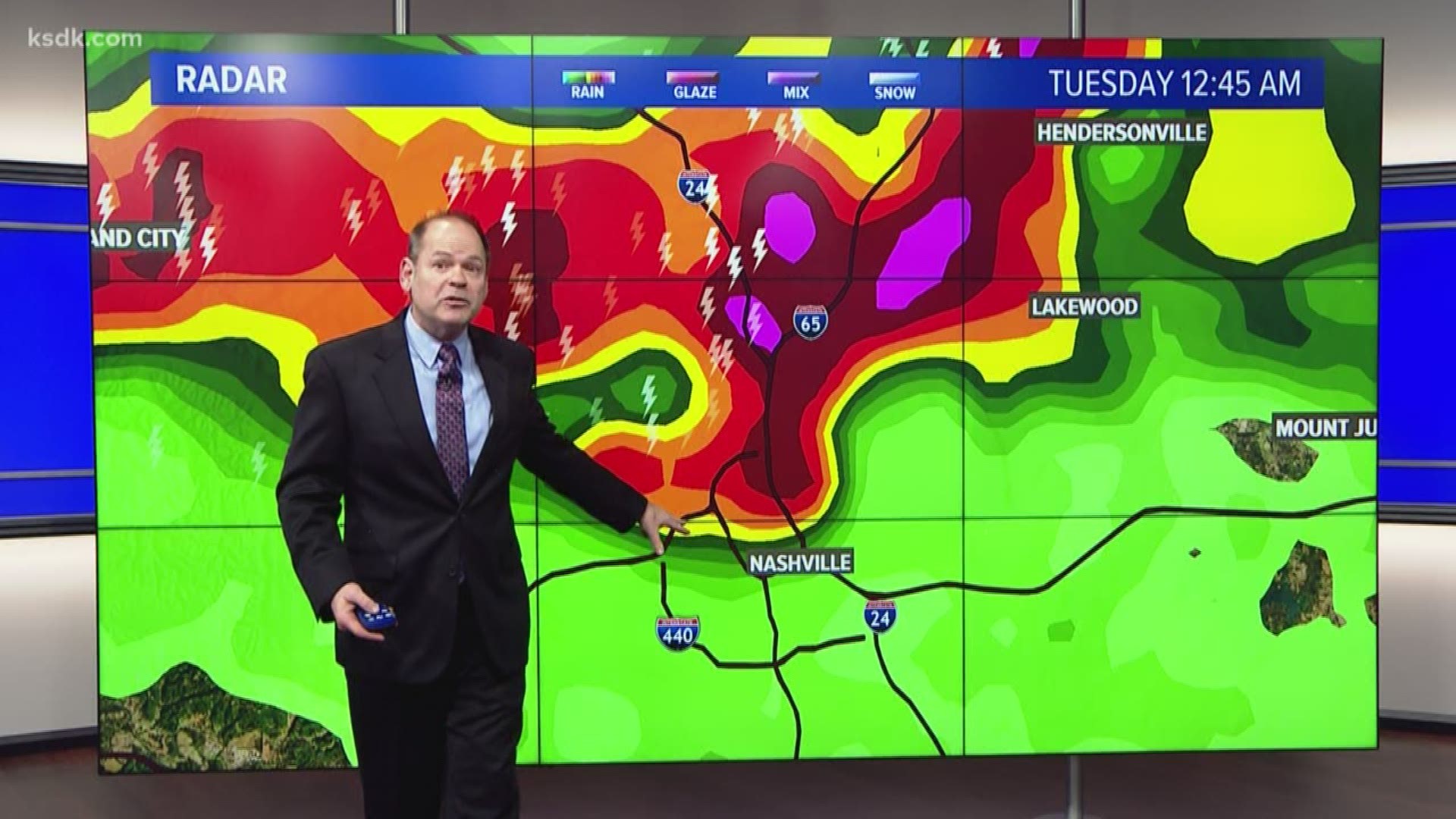ST. LOUIS — Deadly tornadoes tore a path through Middle Tennessee in the overnight hours early Tuesday morning.
While the storms caused extensive damage in the Nashville area, Putnam County – about an hour east of Nashville – had the greatest loss of life. At least 18 people in that county died in the storms, most were likely asleep when the severe weather moved in. In all, at least 24 people were killed in Tennessee.
Researchers at Northern Illinois University looked at the data from more than 48,000 tornadoes from 1950 through 2005. They found that 27% of tornadoes in the United States were nocturnal, yet 39% of tornado fatalities and 42% of killer tornado events occurred at night.
People are more vulnerable during nighttime events because:
- Tornadoes are difficult for the public and trained spotters to see.
- People are more likely to be asleep.
- Warning sirens are designed to mitigate hazards for people outdoors and are less effective at reaching those indoors.
- People are more likely to be in structures that are more susceptible to damage, such as single-family homes and mobile or manufactured homes as opposed to schools and large office or workplace buildings.
Having a way to get severe weather information, especially at night, is key to staying safe in severe weather.
The 5 On Your Side app will send you weather notifications.
5 On Your Side news app
iPhone | Google Play
A NOAA Weather Radio will alert you when warnings are issued. Wireless Emergency Alerts (WEA) will activate your cell phone.
Make sure your settings in notifications for "Government Alerts" are turned on. The severe weather alerts will activate your phone if the cell tower near your phone is in the path of the storm.
The NIU study, published more than 10 years ago, shows the Mid-South is an area where the danger in enhanced, largely because there are more nighttime storms.
The “tornado alley” region of the Great Plains has the most frequent occurrence of tornadoes, while a majority of tornado fatalities occur in the Mid-South region, which includes parts of Arkansas, Tennessee, Alabama and Mississippi.
The study also found seasonal factors come into play. The cool and spring transition seasons from November to April have the highest nocturnal fatality rates, despite having relatively few tornado events. Daylight hours are at a minimum during these months. Researchers believe storms that occur before the national peak in the severe storm season, which spans May and June, are more likely to catch people off guard.

